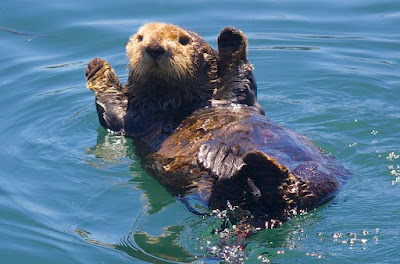Introduction:
Dance, an art form that transcends language and culture, isn't exclusive to humans. In the vast and diverse animal kingdom, there are creatures that exhibit rhythmic movements akin to dancing. Whether it's for courtship, communication, or sheer joy, these animals showcase their own unique brand of choreography. Let's take a fascinating journey into the world of non-human dancers, where every step tells a story.
1. Peacock Spider:
In the miniature world of arachnids, the peacock spider stands out not only for its vibrant colors but also for its mesmerizing courtship dance. Males perform intricate footwork, raising their abdomens and waving their legs in a carefully choreographed routine to woo potential mates. With movements reminiscent of a flamenco dancer, these tiny spiders prove that size is no barrier to grace.
2. Blue-Footed Booby:
Found along the Pacific coast of Central and South America, the blue-footed booby is renowned for its distinctive bright blue feet, which play a central role in its courtship display. During mating season, males engage in a ritualistic dance, lifting their feet up and down in a comical yet captivating performance that captivates potential partners.
3. Honeybee:
While bees are primarily known for their pollination prowess, they also possess a remarkable ability to communicate through dance. In a phenomenon known as the "waggle dance," worker bees convey information about the location of food sources to their hive mates. By moving in specific patterns and angles, they effectively communicate distance, direction, and quality, ensuring the collective success of the colony.
4. Manakin Birds:
Manakins, found in the forests of Central and South America, are renowned for their elaborate courtship displays. Males of some species perform intricate dances, complete with leaps, flips, and rapid wing movements, to attract females. These displays, often accompanied by distinctive sounds, showcase the male's fitness and vigor, serving as a visual symphony in the heart of the jungle.
5. Cuttlefish:
Beneath the waves, cuttlefish engage in a mesmerizing display of color changes and undulating movements during courtship rituals. Males use their specialized skin cells, called chromatophores, to create hypnotic patterns across their bodies, while simultaneously performing graceful movements to seduce potential mates. It's a dance of camouflage and attraction, where beauty and survival intertwine.
6. African Grey Parrot:
Known for their exceptional intelligence and mimicry skills, African grey parrots also possess a knack for rhythmic movement. In captivity, these charismatic birds have been observed bobbing their heads and swaying from side to side in response to music or social interaction. With their playful demeanor and natural curiosity, they bring a touch of avian charm to the dance floor.
7. Sperm Whale:
In the depths of the ocean, male sperm whales engage in a mysterious form of communication known as "clicking." These rhythmic series of clicks, thought to be produced by specialized organs in their heads, serve various purposes, including navigation and social interaction. While not a traditional dance in the conventional sense, this synchronized clicking resonates through the underwater world, echoing the rhythm of life in the deep.
8. Gray Crowned Crane:
With its majestic stature and intricate plumage, the gray crowned crane is not only a sight to behold but also a skilled dancer. During courtship displays, these graceful birds engage in a series of leaps, bows, and pirouettes, accompanied by a cacophony of calls and trumpeting sounds. Their elaborate performance embodies elegance and vitality, symbolizing the beauty of African savannas.
9. Sea Otter:
Along the rugged coastlines of the North Pacific, sea otters engage in playful antics that resemble a synchronized water ballet. These agile marine mammals are often seen floating on their backs, clasping their paws together, and engaging in a rhythmic rocking motion. Whether it's for grooming, social bonding, or simply enjoying the ocean currents, their fluid movements exude joy and contentment.
10. Galah Cockatoo:
Native to Australia, the galah cockatoo is known for its spirited personality and social nature. In the wild, these charismatic birds engage in playful displays, including synchronized head-bobbing and crest-raising rituals. Whether it's a form of communication or simply a way to bond with flock mates, their spirited movements add a touch of flair to the Australian bush.
Conclusion:
From the forest floor to the depths of the ocean, dance permeates every corner of the animal kingdom, serving diverse purposes ranging from courtship to communication. These non-human dancers remind us of the universal language of movement, where rhythm and expression transcend species boundaries. As we marvel at their graceful choreography, let's take inspiration from nature's groovy moves and celebrate the rich tapestry of life on Earth.














No comments:
Post a Comment